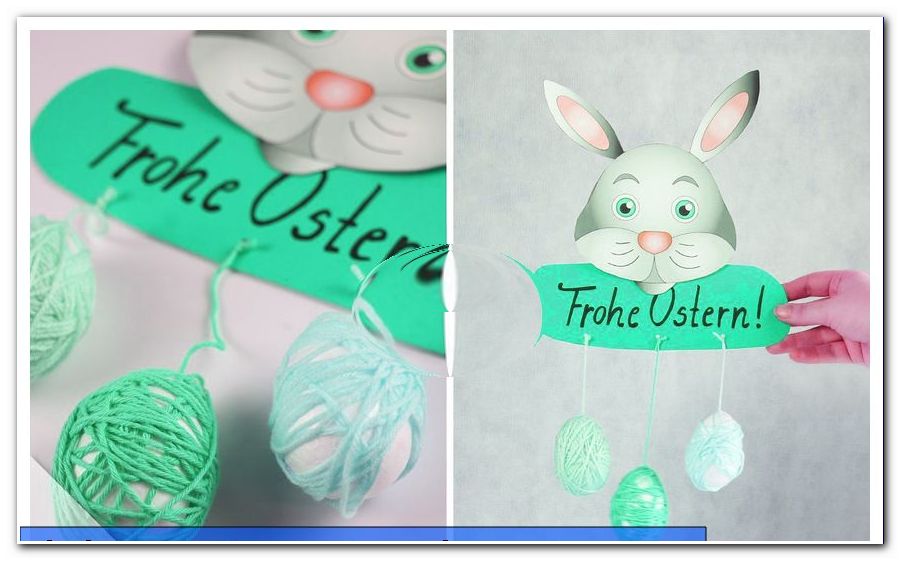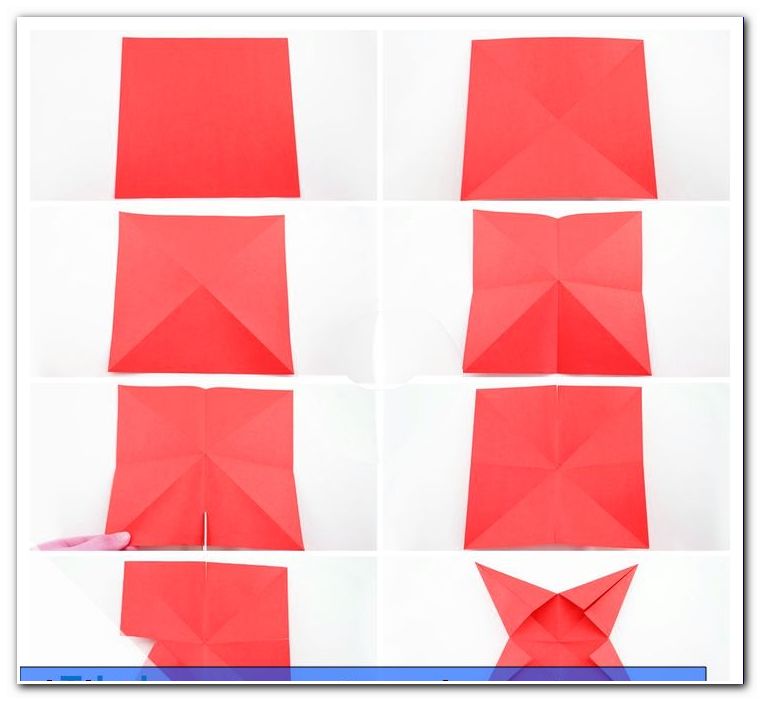Knitting baby socks - knitting instructions for beginners

- Knitting instructions for baby socks
- 1. cuffs and shaft
- 2. The heel
- 3. Stitches from the heel wall
- 4. The gusset
- 5. The sock tip
Little baby socks made of wonderful soft wool keep your feet warm and cozy and are knitted in a few hours according to our instructions. They are a great gift for expecting moms and succeed also inexperienced knitters.
Easy to start and ready in no time
To rework the socks it is sufficient if you master the stitching as well as the right and left stitches. Thanks to the detailed work steps, reworking is child's play, even if you have never knitted socks before. See the detailed size chart for details, so you can tailor the size of the baby socks to fit the baby's age and size.
The required material:
- 15 to 25 grams of sock yarn, depending on size
We used sock yarn with a length of 425 meters per 100 grams of ball. This yarn is available in many great colors for about 10 euros per ball in stores. The material is colorfast and can be safely washed at 40 degrees in the washing machine. Even small pieces of sock wool can be sensibly used for the little ones in this knitting project. So that you do not run out of yarn, we have given the approximate material consumption in the size chart. - A needles size of 2.5
Since the socks are very small, a glove needles game facilitates the work. It is only 15 centimeters long and therefore more manageable than the conventional 20 centimeter long sock needles. Depending on the material (bamboo, wood, metal) cost such a needle game, which contains 5 needles, about 5 €. If you knit very tight or loose, you should use a little thicker or thinner needle game. - A thick darning needle for sewing the beginning and end threads
- tape measure
- Size chart for baby socks

Here you will also find a detailed sock chart incl. PDF for download.
Please note: Since babies have different sized feet, the size chart can only be a guideline.
Knitting instructions for baby socks
1. cuffs and shaft
First strike the required number of stitches on a needle. So that the baby socks are easy to put on, you should choose the most elastic possible attachment technique.
Tip: For yarns where the pattern comes directly from the ball, it is recommended to start the stitching with a clearly visible color change. This will give you two absolutely identical baby socks.
Knit the 1st row in the cuff pattern (1 stitch on the right, 1 stitch on the left), evenly spreading the stitches over the four needles. In the 2nd row the stitches are closed for the round. To avoid a gap, tighten the thread at the transition very well.

Continue round the cuffs and knit 1 stitch on the right, knit 1 stitch on the left until the required waistband height is achieved according to the size chart. The shaft is then worked smoothly right.

Tip: Alternatively, you can work the shaft completely in the cuff pattern. This gives the stem a little more elasticity.
2. The heel
When the stock reaches the length indicated in the size chart, the heel is knitted. This part of the baby socks results in a gentle curve due to the knitting method. To achieve this, the stitches of the 2nd and 3rd needle are shut off and you knit in rows over the stitches of the 1st and 4th needle. These are the needles before and after the round change.
Knitt the stitches of these two needles on a needle smooth right. Turn work over and work a back row left stitch. Work 12/14/16/18 rows, depending on the size, until the heel wall has reached the required height.
Tip: Always work the stitches at the beginning and end of each row to the right. This creates a nodule edge, which facilitates the mesh absorption after the heel.
It follows the Herzchenferse, which sits particularly well with babies. Also this part of the baby socks is worked in rows.
1st row: Knit off half of the heel sts (= 7/8/9/10 sts), knit 1 stitch on the right, take off the next stitch, then knit one stitch on the right and over the stitched stitch. 1 stitch on the right.
Turn to work.
2nd row: Take off the first stitch on the left. Knit 3 stitches on the left, knit the next 2 stitches on the left, 1 stitch on the left.
Turn to work.
3rd row: Take off the first stitch on the right. Knit 4 stitches to the right. Take off 1 stitch, 1 stitch on the right, cover the lifted stitch. 1 stitch right, turn.
4th row: 1 stitch on the left, knit 5 stitches on the left, knit 2 stitches on the left, 1 stitch on the left.
Turn to work.
Continue according to this pattern until all stitches on the needles have been used up. In the case of an odd number of stitches, the stitch knitted on the right or left after the decrease does not appear in the last row.
 Tip: You recognize the place where two stitches have to be knitted together, at the small gap in the fabric.
Tip: You recognize the place where two stitches have to be knitted together, at the small gap in the fabric.
3. Stitches from the heel wall
It continues with the stocking, which is knitted again in rounds. Proceed as follows:
 Divide the number of stitches of the heel and knit the first half of the stitches on a needle. The second half of the stitches are knitted on a new needle. Now take the heel wall size specified in the size chart. Each nodule of the edge mesh results in a new stitch. Take another stitch after the last knot from the smooth right knitted fabric of the shaft. The frequently occurring hole between heel wall and shaft is thereby avoided.
Divide the number of stitches of the heel and knit the first half of the stitches on a needle. The second half of the stitches are knitted on a new needle. Now take the heel wall size specified in the size chart. Each nodule of the edge mesh results in a new stitch. Take another stitch after the last knot from the smooth right knitted fabric of the shaft. The frequently occurring hole between heel wall and shaft is thereby avoided.
The stitches of the second and third needle are knitted on the right. Before the stitching on the second heel wall, first knit out a right stitch between the knot edge stitch and the third needle. Then pick up the stitches on the heel wall as with the first needle and knit off the remaining stitches on the toe on the right. On the first and fourth needle are now significantly more mesh than on the second and third needle.
4. The gusset
The shape of the gusset fits the baby sock over the instep and tapers towards the toes according to the shape of the foot. The gusset is worked as follows:
1st round: smooth right
2nd round: right stitch. Knit together the second and third last stitch of the first needle on the right side. For the 4th needle, lift off the second stitch and pull it over the third stitch (covered decrease).
Repeat the 1st and 2nd round until the same number of stitches are on all four needles. 
Work smoothly in laps on the right until the required foot length is reached.

5. The sock tip
Now it is almost done and the Babysöckchen is almost ready. The conclusion is a band lace.

For this the second and third last stitch of the 1st and 3rd needle are knitted together on the right side. The last stitch of these needles knit right. Also knit the first stitch of the 2nd and 4th needle on the right, lift off the 2nd stitch on the right, knit the 3rd stitch and pull the lifted stitch over it. After the first round of acceptance work a round smooth right. In the third round is again decreased.
Repeat these decreases as often as indicated in the size chart. Pull the end thread twice through the remaining stitches and sew as well as the starting thread well.

Tip: When the baby starts to walk, the baby socks on slippery surfaces are very slippery. If you paint pattern or polka dots on the sole of the foot with Pluster color, this gives you the necessary support for the first steps.
Just knit the baby blanket and knitted hat that matches the socks - these two instructions are available:
- Knit baby blanket - //www.zhonyingli.com/babydecke-stricken-strickanleitung/
- Knit baby hat - //www.zhonyingli.com/babymuetze-stricken/




